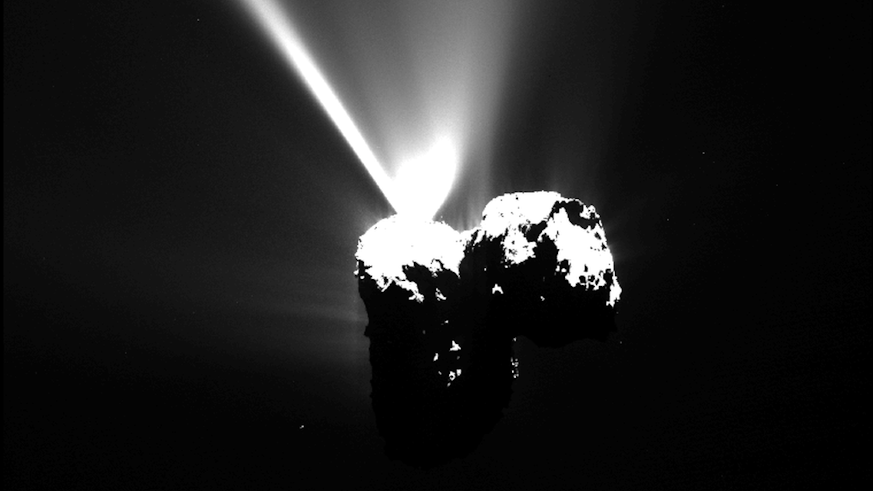Rosetta mission uncovered at Museum
20 August 2015

Senior Science Adviser at European Space Agency discusses ‘most exciting space exploration mission in decades’
Almost a year since the Rosetta spacecraft rendezvoused with a comet over 400 million km away from Earth, a senior scientist from the European Space Agency will be visiting Cardiff to discuss his first-hand experience of the historic mission and what lies ahead for scientists trying to use Rosetta’s data to unlock the mysteries of the origin of life.
Taking place in the Reardon Smith Lecture Theatre, National Museum Cardiff (Mon 24 August), and hosted in partnership by Amgueddfa Cymru - National Museum Wales and the School of Physics and Astronomy, Prof Mark McCaughrean will give his account of the nail-biting moments when the Rosetta spacecraft was brought out of its 957-day hibernation period and when its landing module, Philae, was released and sent to land on Comet 67P/Churyumov-Gerasimenko.
Prof McCaughrean will draw on his role as a Senior Science Advisor at the European Space Agency to give a behind-the-scenes view of the mission and its 10-year history, as well as discuss some of the most recent results that the team have been able to collect from the Philae lander.
After launching in 2004, the Rosetta spacecraft finally completed its journey and arrived at Comet 67P in August 2014. Just a few months later, the spacecraft released its landing module, Philae, which touched down on the comet on 12 November – a first in the history of space exploration.
After a bumpy landing, Philae was plunged into darkness and operated on batteries for just a few days, before hibernating and waking up on 13 June 2015 to collect data.
Just last month it was confirmed that the Philae lander had discovered an array of carbon compounds on the surface of the comet, which supports the theory that comets may have provided the early ingredients for life on Earth.
Ahead of his talk, Prof McCaughrean said: “Rosetta is one of the most exciting space exploration missions in decades – rendezvousing with, escorting, and landing on a comet. But it’s the scientific story that’s the most compelling part. What can we learn about the origin of water on Earth, and perhaps even of life itself, by studying this icy treasure chest of material left over from the birth of our solar system, up close and personal?”
Dr Jana Horak, Head of Mineralogy & Petrology, Amgueddfa Cymru – National Museum Wales, said: “This is another exciting collaborative event with Cardiff University following our successful event to watch the partial eclipse of the Sun earlier in the year. This is a fantastic opportunity to hear all about Prof McCaughrean’s historic space mission and I’m sure guests on the evening will enjoy too.”